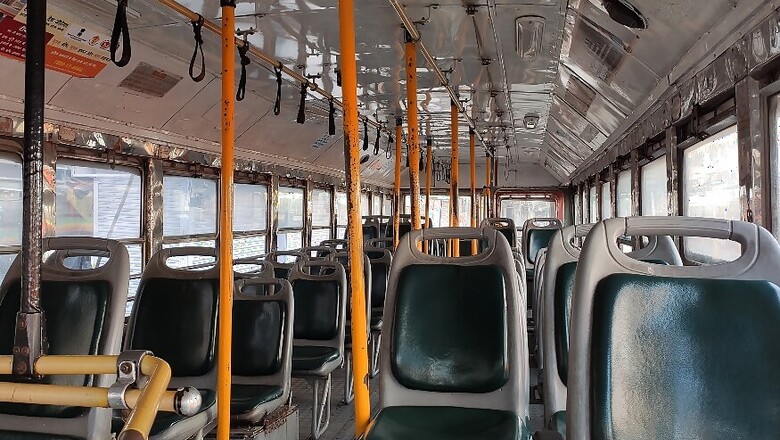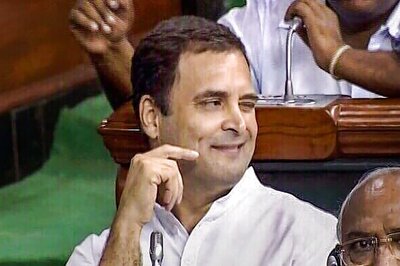
views
The post Covid19 world will have one constant that is the social distancing norm. This implies that transport system must be so designed that passengers are at a safe enough distance from each other. Does it mean people must travel henceforth by their own vehicle? What will happen to those who do not afford such luxury? What will happen to the present mode of public transport remains the major challenge to be addressed.
In 1960, a seminal report titled ‘Traffic in Towns’ was presented to the Government of UK by a committee of experts, led by the Scottish town planner Sir Colin Buchanan. For the first time, this report recognized that building newer roads to accommodate all the cars, is not a practical or a feasible solution for cities. Public transport was important.
Over the past 60 years, country after country has been trying to adopt policies that promote the use of public transport over personal motor-vehicles. National policies like UK’s New Deal for Transport in 1997, US’s Urban Mass Transportation Act in 1964, China’s State Council Directive 64 in 2012, and India’s National Urban Transport Policy in 2006, have continuously focused on prioritizing public transport. These policies have resulted in many mass-transit systems coming up and bus-based systems getting a fillip. In India, more than 10 cities have invested in metro rails today, at a cost of nearly Rs. 300 crore per kilometre, indicating the importance our cities are giving to policies favouring public transport. In the post-Covid world do we deviate from this well-planned policy?
In a country like India, where owning and driving a private vehicle is often a matter of status symbol, governments, mobility experts and environmentalists alike have long struggled to change the people’s perception and initiate a shift towards non-polluting, more efficient transport choices. Efforts to fine-tune policies, improve vehicle designs, offer multiple options (like door-to-door connectivity, confirmed seats, app-based services) have consistently been focused on encouraging private cars users to move to public transport. Constant urban struggles with traffic congestion, vehicular pollution, parking problems, have validated the need for this shift. The key issue is that the the Covid-19 pandemic is threatening to reverse the persistent and meticulous effort by the government and the proponents of public transport. The situation now warrants a quick the corrective action.
First, these systems have been at a standstill for over a month now. They have been incurring almost 60% of their expenses ( on salaries and maintenance) during this period but are receiving no revenue. These public utilities are inherently loss-making, but they are expected to serve a larger public purpose than to be profit making. Given this context their finances are already strained. The month long standstill, with the added uncertainty around when the systems would resume, will put them into a downward financial spiral.
Secondly, the emergence of several effective communication platforms during the lockdown has shown that it is possible for many office employees to work from home. Online shopping for groceries, goods, essentials have been tailored to suit the people’s needs, and is bound to only become more popular in the years to come, resulting in a further reduction in the intra-city travel demand. This reduction in the overall travel demand maybe good to reduce traffic congestion and air pollution in our cities, but spells bad news for the public transport.
Finally, as mentioned, the need for social distancing will drive people’s choice of travel modes towards vehicles with fewer passengers, at least in the immediate future. In the course of time, as we gradually overcome the pandemic, our concern about social proximity might begin to get diluted, but looming fears will dominate our lives and commuting patterns for months to come.
All these factors will impact the patronage of public transport systems, especially the high-end, mass-transit systems like India’s metro rails. People using the Metro, are typically the ones who have access to and can afford an auto rickshaw or a shared on-demand taxi, or even the newly emerging app-based mini-buses. On the other hand, standard city buses might just weather the storm, as they carry fewer passengers and are used by the section of people who cannot afford personal or private transport.
In the post-Covid scenario, when the lockdown lifts and restrictions relax, it is important for public policies to evolve quickly and efficiently, to arrest a possible and overwhelming demand on personal motor-vehicles again. Such a rebound will lead to gridlock on the streets and adversely impact economic recovery.
Some measures can ease the post-lockdown transition and enhance the stability and dependence on public transport:
Ensure that public transport systems receive quick and adequate compensation for the losses they have incurred during the lockdown and are able to restart operations soon. This will be important for enabling safe mobility and a quick revival of the economy.
Enhance the supply of premium bus services, which may charge more than the standard buses, but offer a higher quality of service – such as assured seating, easy booking and no crowding. App-based mini-buses that have emerged in the market will be one among such premium services. However, today they face regulatory barriers to increased supply. These barriers are outdated and need to be removed.
Increase the supply and the frequency of standard city buses, so that passengers can adhere to social distancing norms while commuting.
Encourage new micro-mobility options, like shared bikes and electric mopeds, for short trips as they are cleaner and can also enhance access to metro rail systems.
At this juncture, it is important for us to recognize that urban mobility systems will be fundamental to ensure a quick recovery of our economy. They enable people to access their jobs, children to access their schools and goods to access their markets. The economy cannot revive unless mobility systems function smoothly.
India has orchestrated a move towards public transport, very systematically and deliberately over the last 60 years. Today, it is time to reassess and create a network meeting the challenges posed by the pandemic. The sooner we design a robust and quickly adaptable route to moving people efficiently, the faster will be the road for economic recovery.
Dr. OP Agarwal is CEO, World Resources Institute India Views expressed are his own.


















Comments
0 comment